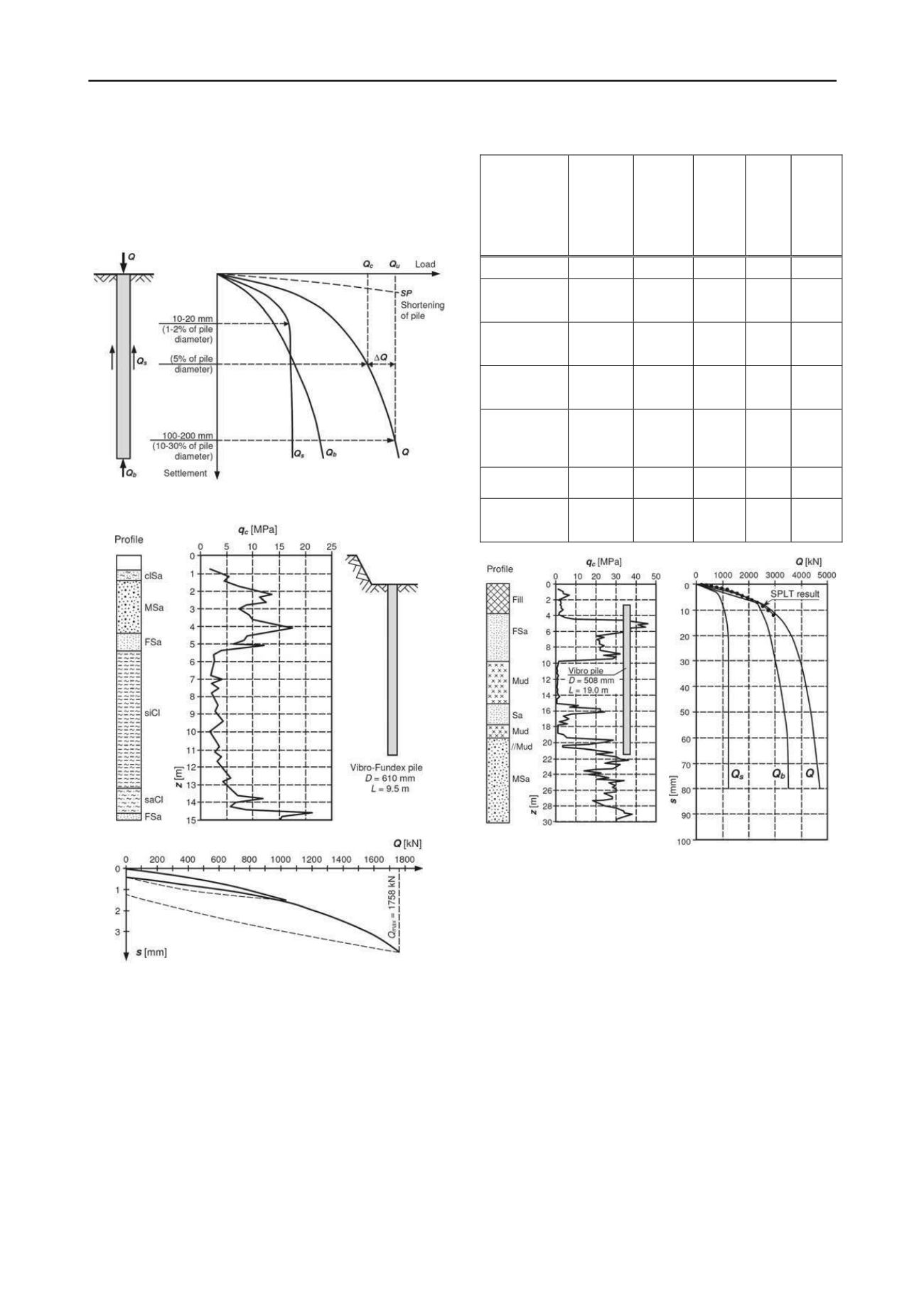
2740
Proceedings of the 18
th
International Conference on Soil Mechanics and Geotechnical Engineering, Paris 2013
precisely defined (Fig. 1). Possibly, some reserve
∆Q
may be
included in relation to critical load
Q
c
(see Gwizdala 1997).
Comparison of bearing capacities calculated by various
methods reveals significant differences. Exemplary results of
calculations for Vibro pile and for data presented in Fig. 2 are
collated in Table 1.
Figure 1. Generalized load-settlement curves of pile
Figure 2. Data and static load test result of Vibro-Fundex pile, taken
into calculation analysis
Currently big pressure is put on the development of
calculation methods based on direct results of in situ tests, e.g.
CPTU tests and making use of load-transfer
t-z
i
q-z
functions.
Such method has been proposed by Gwizdala and Steczniewski
2007 (see example shown in Fig. 3) and for screw displacement
piles by Krasinski 2012.
The problem becomes much complex for the piles installed
in layered soils with highly diverse strength parameters. In such
cases reliable results can be obtained from static load tests
(SPLT).
Table 1. Static load test and calculation results for Vibro–Fundex pile
Method
Bearing
capacity
based on
characte-
ristic
parameters
[kN]
Corre-
lation
coeffi-
cients
Chara-
cteristic
bearing
capacity
R
c;k
[kN]
Partial
resis-
tance
factor
t
Calcula-
ted
bearing
capacity
R
c;d
[kN]
Design load
Q
r
–
–
–
–
1034.0
PN-83/B-
02482
based on SPLT
1758.0
(
R
c
=
Q
max,SPLT
)
–
–
k
= 0.8
1406.0
EN 1997-1;
2004
based on SPLT
1758.0
(
R
c
=
Q
max,SPLT
)
1
= 1.4
2
= 1.4
1256.0
1.1
1142.0
EN 1992-2;
2007
(DIN 1054)
2378.0
3
= 1.4
4
= 1.4
1699.0
1.1
1545.0
LCPC
Bustamante
& Gianeselli
(1982)
1980.0
3
= 1.4
4
= 1.4
1414.0
1.1
1285.0
– method
API (1984)
1538.0
3
= 1.4
4
= 1.4
1098.0
1.1
998.0
Gwizdala &
Steczniewski
(2007)
2308.0
3
= 1.4
4
= 1.4
1648.0
1.1
1498.0
Figure 3. Example of Vibro pile calculation results obtained from load-
transfer functions method (Gwizdala and Steczniewski 2007)
2. EXAMPLES OF IN SITU TESTS ON DRIVEN
DISPLACEMENT PILES
Driven displacement piles are applied for constructions
transmitting large loads and when small settlements are
required, especially plastic settlements for designed load range.
Very good characteristics of subsoil-pile interaction are
obtained for driven cast-in-place displacement piles such as
Virbo, Vibro-Fundex and Franki. (Fig. 3, 4 and 5).
2.1.
Tests on Vibro and Franki piles under bridge object of A1
highway
In the frame of reconnaissance works for foundation of access
flyover roads to large bridge over the Vistula river some tests on
Vibro and Franki piles have been carried out. Vibro piles have
the diameter of 508/560 mm and the length 25.4 m whereas
Franki piles 560 mm and 23.5 m respectively. In Fig. 4
geotechnical conditions in the form of CPTU characteristics and
settlement curves obtained from load tests are presented. Load –


